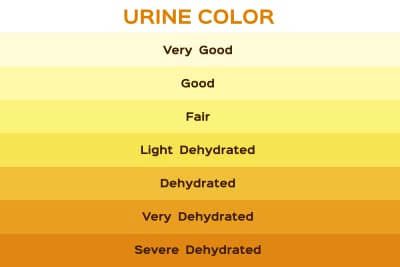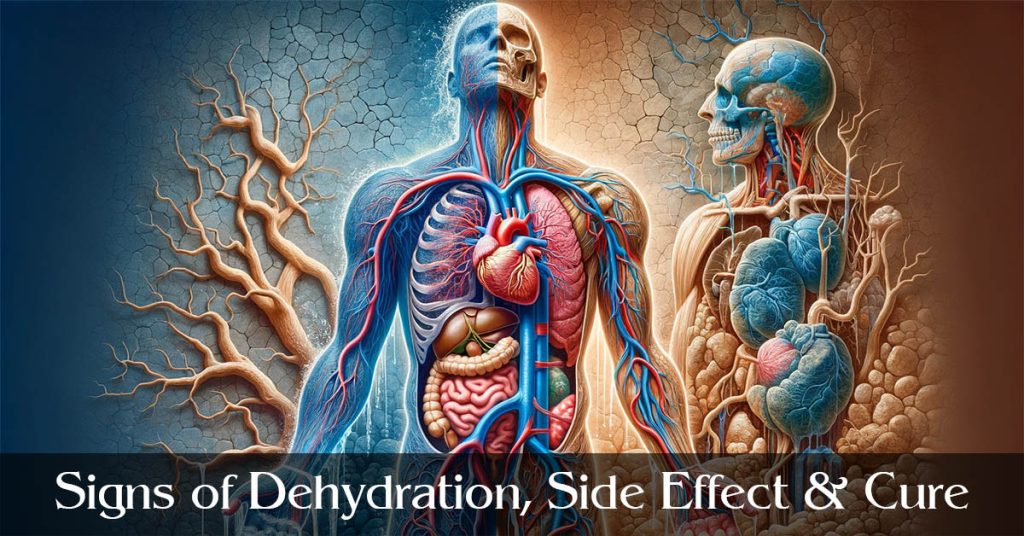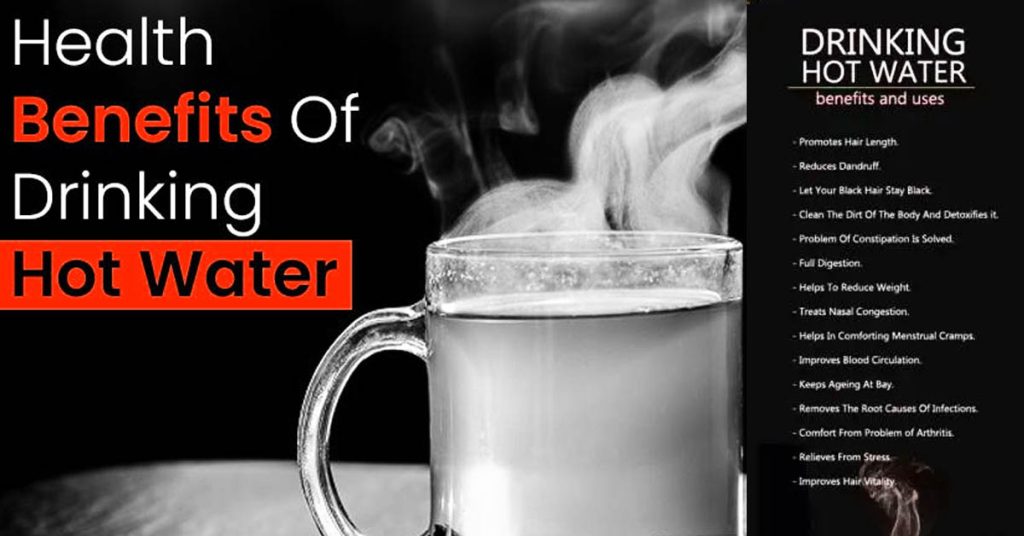In our hectic daily lives, it’s easy to forget to drink enough water. We often prioritize our work, family, and other responsibilities over something as seemingly simple as staying hydrated. However, dehydration is a serious issue that can have detrimental effects on our health. In this article, we’ll explore 10 signs of dehydration in adults in detail, using everyday language to make it easy for everyone to understand. We’ll also share anecdotes, provide essential information, and offer guidance on how to combat dehydration effectively.
- Understanding Dehydration and Its Symptoms in Women
- 10 Signs of Dehydration
- 1. Thirst and Signs of Severe Dehydration
- 2. Dark Yellow Urine and How to Test for Dehydration
- 3. Dry Mouth and Dry Skin: Symptoms of Dehydration in Adults
- 4. Fatigue and Lethargy: The Impact on Adults
- 5. Headaches: A Pounding Reminder of Dehydration
- 6. Dizziness and Lightheadedness: Effects on Adults
- 7. Muscle Cramps and How to Combat Dehydration During Exercise
- 8. Decreased Urination and Its Implications for Adults
- 9. Rapid Heartbeat and Its Connection to Dehydration in Adults
- 10. Sunken Eyes and Loss of Elasticity in Skin: Visible Effects of Dehydration in Adults
- Side Effects of Dehydration
- Tackling Dehydration: A Step-by-Step Guide
- Additional Resources
- Conclusion: Stay Hydrated, Stay Healthy
- FAQ's:
Understanding Dehydration and Its Symptoms in Women
Before we dive into the signs, let’s briefly understand what dehydration is. Dehydration occurs when your body loses more fluids than it takes in. This imbalance can lead to a range of health problems, including symptoms of dehydration in women. The human body is composed of approximately 60% water, which emphasizes the importance of maintaining proper hydration levels.
The Role of Water in Our Bodies
Water is essential for various bodily functions, including:
- Digestion: It helps break down food and absorb nutrients.
- Temperature Regulation: Sweat keeps us cool during hot weather or physical activity.
- Circulation: Blood is primarily composed of water, aiding the transportation of oxygen and nutrients.
- Detoxification: Water flushes out waste products from our bodies.
- Joint Lubrication: It keeps joints cushioned and prevents friction.
- Brain Function: Proper hydration is crucial for cognitive functions like concentration and memory.
10 Signs of Dehydration
Now that we understand the significance of staying hydrated, let’s delve into the 10 signs of dehydration in adults.
1. Thirst and Signs of Severe Dehydration
Transition: The most obvious sign of dehydration is often the most overlooked – thirst. But what are the signs of severe dehydration?
We’re starting with the most straightforward sign because it’s your body’s way of signaling that it needs water. When you feel thirsty, your body is already in a state of mild dehydration. The next time you experience a dry mouth or that familiar parched feeling, don’t ignore it. Reach for a glass of water or a hydrating beverage to quench your thirst. For severe dehydration, watch out for additional signs of severe dehydration.
2. Dark Yellow Urine and How to Test for Dehydration

Transition: Paying attention to the color of your urine can provide valuable insights into your hydration status. But how do you test for dehydration?
Urine color is a reliable indicator of your hydration level. If your urine is dark yellow, it’s a sign that you need to drink more water. Ideally, your urine should be pale yellow or straw-colored, indicating that you are well-hydrated. Keep an eye on this simple yet effective gauge of hydration. Wondering how to test for dehydration? Monitoring your urine color is a practical way.
Illustration: Imagine your body as a car, and water as the fuel. Dark yellow urine is like a warning light on your dashboard, telling you it’s time to refuel!
3. Dry Mouth and Dry Skin: Symptoms of Dehydration in Adults
Transition: Dehydration affects more than just your internal systems; it can also manifest externally. What are the common symptoms of dehydration in adults?
When your body lacks adequate hydration, it can lead to a dry mouth and dry skin – classic symptoms of dehydration in adults. Your saliva production decreases, resulting in that uncomfortable feeling of a parched mouth. Dry skin can make you feel itchy and uncomfortable. So, if you find yourself reaching for lip balm or moisturizer frequently, it might be time to reach for that water bottle instead.
Illustration: : Think of your skin as a sponge. When it’s well-hydrated, it’s soft and pliable. But when it’s dry, it becomes stiff and brittle.
4. Fatigue and Lethargy: The Impact on Adults
Transition: Feeling unusually tired and sluggish? Dehydration might be the culprit. How does dehydration affect adults?
When your body is dehydrated, your blood volume decreases, which can lead to reduced blood flow to your muscles and organs, causing fatigue and lethargy – common effects of dehydration in adults. You might notice that you feel unusually tired even after a good night’s sleep. If this becomes a recurring issue, consider increasing your water intake.
Illustration: Imagine trying to run a car with a low fuel tank. It may sputter and slow down. Your body is no different – it needs fuel in the form of water to function optimally.
5. Headaches: A Pounding Reminder of Dehydration
Transition: Dehydration can even give you a pounding headache. What are the connections between headaches and dehydration?
Dehydration can lead to headaches and even migraines in some cases. When your body lacks sufficient fluids, your brain temporarily contracts or shrinks from fluid loss, triggering pain receptors and resulting in those throbbing headaches. So, the next time you have a headache, try drinking a glass of water before reaching for painkillers.
Illustration: Think of your brain as a delicate flower. Without water, it wilts and causes discomfort.
6. Dizziness and Lightheadedness: Effects on Adults
Transition: Feeling dizzy or lightheaded can be a disconcerting experience, and dehydration can play a role in this sensation. How does dehydration affect adults in terms of dizziness and lightheadedness?
Dehydration can cause a drop in blood pressure, leading to dizziness and lightheadedness. If you stand up too quickly and feel like the room is spinning, it could be a sign that you need to hydrate. Ensure that you sit down and have some water to stabilize your blood pressure.
Illustration: Imagine your body as a skyscraper elevator. Dehydration is like a malfunctioning elevator – it makes you feel wobbly and unsteady.
7. Muscle Cramps and How to Combat Dehydration During Exercise
Transition: Muscle cramps can be painful and frustrating, and they may be related to your hydration status. How can you combat dehydration during exercise?
Muscle cramps are a common sign of dehydration, especially during physical activity. When you’re dehydrated, your muscles are more prone to cramping and spasms. To prevent this, make sure to drink water before, during, and after exercise.
Illustration: Picture your muscles as rubber bands. When they’re well-hydrated, they stretch and move smoothly. But when they lack water, they become rigid and prone to snapping – just like a dry rubber band.
8. Decreased Urination and Its Implications for Adults
Transition: Changes in your urination frequency and volume can provide valuable clues about your hydration status. How does decreased urination relate to dehydration in adults?
If you’ve noticed that you’re urinating less frequently or in smaller quantities, it could be a sign of dehydration. When your body doesn’t have enough water, it conserves fluids by producing less urine – a sign that you may be experiencing dehydration. Monitoring your urination patterns can help you gauge your hydration levels.
Illustration: Think of urination as your body’s way of flushing out waste. When you see less urine, it’s like a clogged drain – a signal that you need to clear the blockage with more water.
9. Rapid Heartbeat and Its Connection to Dehydration in Adults
Transition: Your heart rate can also be affected by dehydration. How does dehydration impact your heart rate?
Dehydration can lead to an increased heart rate or palpitations. When your body is low on fluids, your heart has to work harder to pump blood and maintain circulation. If you notice your heart racing without an obvious cause, it might be time to rehydrate.
Illustration: Imagine your heart as a pump. Dehydration is like making it pump thicker, more viscous fluid instead of smooth, flowing water. It strains the pump and can lead to irregular beats.
10. Sunken Eyes and Loss of Elasticity in Skin: Visible Effects of Dehydration in Adults
Transition: Dehydration can even affect the appearance of your eyes and skin. What are the visible effects of dehydration in adults?
Dehydration can cause the skin around your eyes to appear sunken and your skin, in general, to lose its elasticity – noticeable effects of dehydration in adults. These visible signs are often seen in severe dehydration cases. If you notice these changes, it’s crucial to start rehydrating immediately and seek medical attention if necessary.
Illustration: Imagine your skin as a balloon. When it’s well-inflated with water, it’s smooth and plump. But when it’s deflated due to dehydration, it becomes wrinkled and loses its shape.
Side Effects of Dehydration
Dehydration can have several side effects that range from mild to severe, depending on the extent of fluid loss and the duration of dehydration. Here are some common side effects of dehydration:
- Kidney Stones: Dehydration can lead to the formation of kidney stones, which are painful crystalline deposits that can develop in the kidneys or urinary tract.
- Dry or Sticky Mouth: Dehydration can cause your mouth to become excessively dry or sticky due to reduced saliva production, leading to discomfort and difficulty in speaking or swallowing.
- Cognitive Impairment: Inadequate hydration can impair cognitive functions such as concentration, memory, and decision-making, affecting your overall mental clarity.
- Constipation: Dehydration can slow down the digestive process, leading to constipation, as the colon absorbs more water from the stool, making it harder and more difficult to pass.
- Increased Risk of Urinary Tract Infections (UTIs): Dehydration can make you more susceptible to UTIs because it reduces the body’s ability to flush out bacteria from the urinary tract.
- Dry, Itchy Skin: Dehydration can cause your skin to become dry, itchy, and more prone to irritation and skin conditions like eczema.
- Electrolyte Imbalance: Severe dehydration can disrupt the balance of essential electrolytes like sodium, potassium, and chloride in your body, leading to muscle weakness, cramps, and heart irregularities.
- Joint Pain: Inadequate hydration can contribute to joint discomfort and pain, as water is essential for lubricating and cushioning the joints.
- Bad Breath: Dehydration can result in halitosis or bad breath due to reduced saliva, which normally helps clean the mouth and neutralize odor-causing bacteria.
- Decreased Athletic Performance: Athletes may experience a decline in performance when dehydrated, as it can lead to muscle fatigue, decreased endurance, and impaired thermoregulation.
Tackling Dehydration: A Step-by-Step Guide
Now that we’ve discussed the 10 signs of dehydration in adults, let’s explore how to combat it effectively. Staying hydrated is not only essential for your overall health but can also improve your daily life.
- Drink Plenty of Water: The most straightforward step is to drink enough water throughout the day. Aim for at least eight 8-ounce glasses, known as the 8×8 rule.
- Set Reminders: Use your phone or a timer to remind yourself to drink water regularly. Sometimes, we forget to hydrate amidst our busy schedules.
- Choose Hydrating Foods: Include water-rich foods like fruits (e.g., watermelon, oranges) and vegetables (e.g., cucumber, celery) in your diet.
- Carry a Water Bottle: Having a water bottle with you at all times makes it convenient to sip water throughout the day.
- Monitor Urine Color: As mentioned earlier, keep an eye on your urine color. If it’s dark, increase your water intake.
- Hydrate During Exercise: Drink water before, during, and after physical activity to prevent muscle cramps and excessive sweating.
- Limit Dehydrating Beverages: Reduce consumption of dehydrating beverages like caffeine and alcohol.
- Stay Hydrated in Hot Weather: Hot weather can lead to increased fluid loss through sweating. Drink more water when it’s hot outside.
- Listen to Your Body: Pay attention to your body’s signals. If you feel thirsty, don’t ignore it.
- Consult a Healthcare Professional: If you suspect severe dehydration or experience persistent symptoms, seek medical advice.
Remember that staying hydrated is an ongoing process. It’s not something you can achieve overnight, but by making small changes to your daily routine, you can maintain optimal hydration levels.
Additional Resources
To explore deeper into the topic of hydration and its importance, you can explore these valuable resources:
- CDC – Water & Nutrition
- Mayo Clinic – Dehydration
- Harvard Health – The Importance of Staying Hydrated
Conclusion: Stay Hydrated, Stay Healthy
In conclusion, recognizing the signs of dehydration is crucial for maintaining good health, especially in adults. It’s easy to underestimate the impact of not drinking enough water, but as we’ve discussed, the consequences can be significant. By paying attention to your body, staying mindful of the signs, and following our step-by-step guide, you can ensure that you stay adequately hydrated.
Don’t wait until you’re parched or experiencing symptoms – make hydration a priority in your daily life. Your body will thank you for it, and you’ll enjoy the benefits of improved health and well-being. Remember, water is not just a simple beverage; it’s the lifeblood of your body, and taking care of it is taking care of yourself.
While staying hydrated is crucial, it’s worth noting that the temperature of the water you drink can also have its own set of advantages and disadvantages. If you’re curious about the pros and cons of drinking hot water, let’s explore that topic alongside our discussion of the signs of dehydration.





